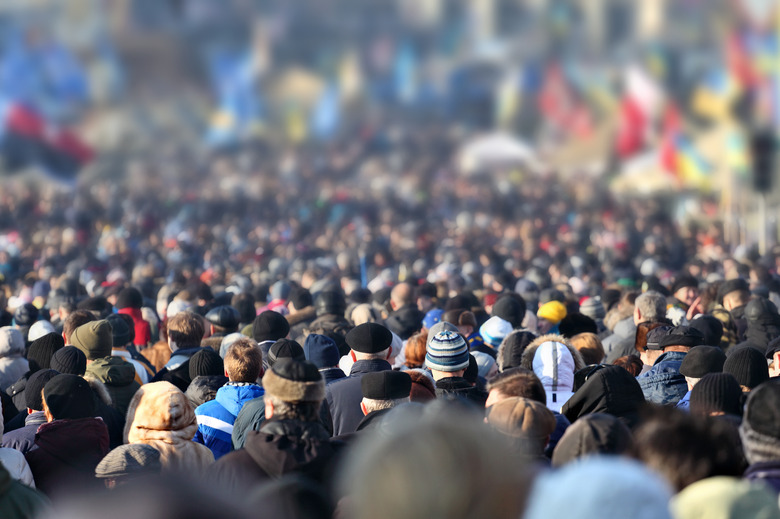Carrying Capacity In A Ecosystem
Carrying capacity is the largest population size that an ecosystem can sustainably support without degrading the ecosystem. To a certain extent, population numbers are self-regulating because deaths increase when a population exceeds its carrying capacity. Disease, competition, predator-prey interaction, resource use and the number of populations in an ecosystem all affect carrying capacity.
Population Growth
Population Growth
Population ecologists define carrying capacity as the population size in which the population's growth rate is equal to zero. A population at carrying capacity is neither growing nor shrinking. When the numbers of individuals in a population of animals, plants or humans exceed their carrying capacity, deaths outnumber births. As the population drops below carrying capacity, the birth rate grows until births outnumber deaths. When the population is at carrying capacity, the numbers stop fluctuating.
Changing Factors
Changing Factors
Carrying capacity can also be taken in a broader sense — to mean all plants and animals that an area of the Earth can support at once. Each organism that lives there will have a different carrying capacity, one that interacts with everything around it. If the climate changes and the resources a particular animal needs for food drop, for example, that change in carrying capacity for one species will affect other populations in the area. Carrying capacity for a species or populations relies on the amount of available resources, population size and the resources each individual in the population consumes.
Patterns
Patterns
When a population enters a new ecosystem or is well below carrying capacity for that ecosystem, one of two patterns takes hold as the population adjusts. In the first pattern, populations increase quickly while resources and food are abundant but slow as their numbers approach carrying capacity. Resource scarcity and lower birth rates slow population growth before carrying capacity is reached.
In the second pattern, a population grows exponentially and overshoots carrying capacity without leveling off. These populations exhaust limiting resources and then crash, with high death rates leading to a drastically reduced population size.
Human Implications
Human Implications
For people, carrying capacity usually refers to the numbers of humans the Earth can sustainably support as an integrated ecosystem. Standard of living comes into play when calculating carrying capacity for humans. The Earth can support a relatively small number of people who consume a Western diet, drive their own cars and live in large single-family homes — or a larger number of people at the standard of living more common in developing countries. Human reliance on technology complicates the issue, since people have a certain ability to change their environments. The question of whether the human species will level off near carrying capacity or "crash" as a species remains to be seen.
Cite This Article
MLA
Maclin, Ellie. "Carrying Capacity In A Ecosystem" sciencing.com, https://www.sciencing.com/carrying-capacity-ecosystem-5201/. 23 April 2018.
APA
Maclin, Ellie. (2018, April 23). Carrying Capacity In A Ecosystem. sciencing.com. Retrieved from https://www.sciencing.com/carrying-capacity-ecosystem-5201/
Chicago
Maclin, Ellie. Carrying Capacity In A Ecosystem last modified August 30, 2022. https://www.sciencing.com/carrying-capacity-ecosystem-5201/
